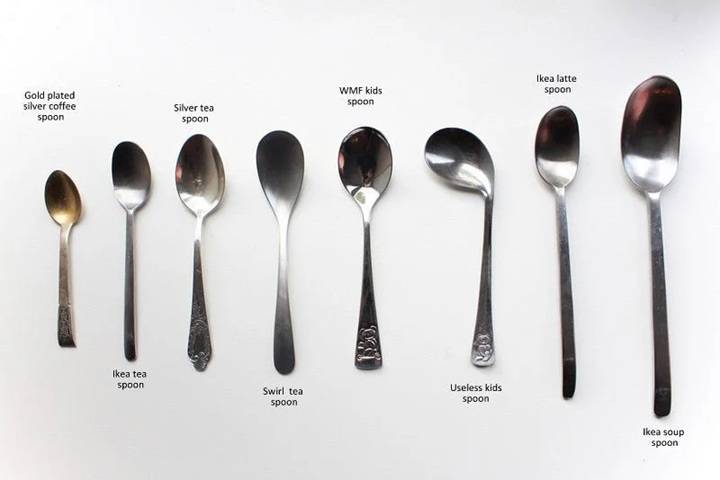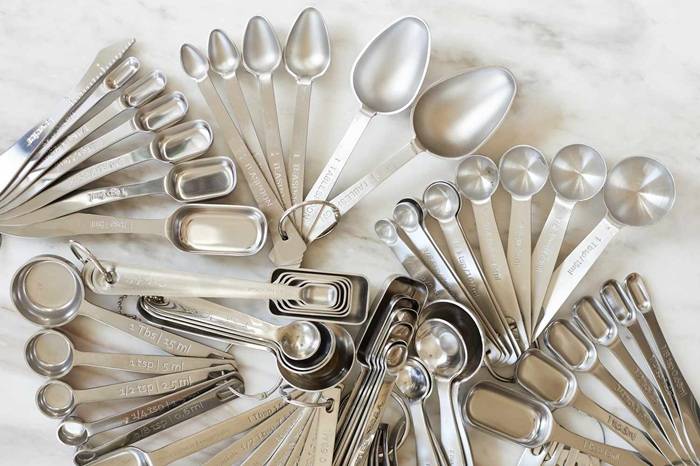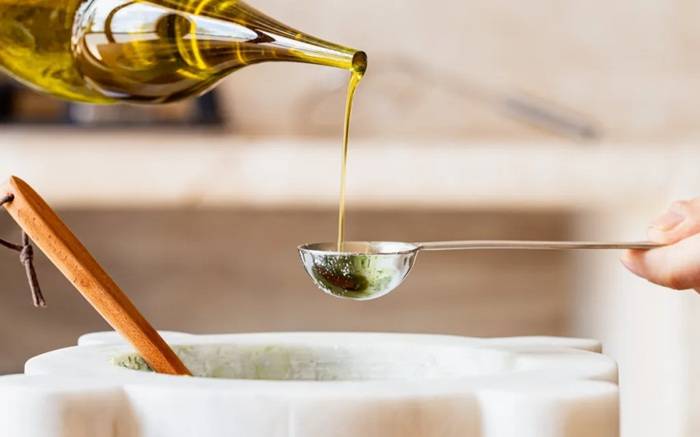
How Many Ounces Are in a Tablespoon: The Complete Guide to Kitchen Accuracy
Baking and cooking are not art-science. Between salad dressing and pancake batter, kitchen language is precision. A mismeasured measure can ruin texture, consistency, or taste. One question is always the thing in doubling recipes, cutting calories, or estimating: How much in an ounce of a tablespoon?
Solution is what you’re measuring wet or dry, and whether measuring weight or volume ounces. Throughout this ultimate guide, we’ll demystify the conversions, level the playing field on systems used across the globe, provide ingredient weights, and provide mastermind kitchen tricks so your recipes turn out perfect.
Key Takeaways
- One US tablespoon = 0.5 fluid ounces
- A tablespoon will not always weigh the same weight is ingredient-dependent
- Australian and British tablespoons are slightly smaller compared to the US tablespoon
- Dry and wet ingredients are treated differently
- Conversion is possible if the density of the ingredients is known
Understanding What a Tablespoon Is in the Kitchen

A tablespoon is a culinary unit of measurement in a recipe. It is equal to 0.5 fluid ounces or close to 14.79 milliliters in US measurement. The UK tablespoon is close to 17.7 milliliters. But the Australian tablespoon is larger at 20 milliliters.
So with an Australian or UK recipe, the very same “1 tablespoon” could be radically different amounts of oil, honey, or spices to a US recipe. And that is significant when the ingredient is concentrated. Like vanilla extract or cayenne pepper.
Fluid Ounces vs Weight Ounces: A Key Difference
So in order to truly get how tablespoons measure ounces, you must understand the two types of ounces:
- A fluid ounce is a volume measure how much room it occupies
- A dry ounce or an ounce by weight is a weight measure how heavy it is
So a tablespoon of water is about 0.5 fluid ounces and practically 0.5 ounces in weight. But a tablespoon of peanut butter will occupy the same. But it’ll weigh more, nearly one ounce. Because it is denser. That creates humongous differences in cooking outcomes as well as in monitoring nutrition.
Why Ingredient Density Makes All the Difference
Suppose you’re trying to measure a tablespoon of flour versus a tablespoon of honey. Even though they fill the same-sized spoon. But they do not weigh the same, as the flour is light and fluffy. So a tablespoon might only weigh 8 or 9 grams. Honey is thick and dense. But one tablespoon of it might weigh 21 grams or more.
This is handy while baking or tracking caloric consumption. Dry ingredients measured in terms of weight with a kitchen scale. Which are more accurate than measuring volumetrically.
How Many Fluid Ounces in a Tablespoon?
In United States customary system:
- 1 tablespoon = 0.5 fluid ounces
- 2 tablespoons = 1 fluid ounce
- 3 tablespoons = 1.5 fluid ounces
These to memorize will reward you when doubling recipes. When you see “1.5 fl oz” olive oil, simply subtract 3 tablespoons.
Converting from Tablespoons to Milliliters and Grams

As a convenient reference, a US tablespoon is approximately 14.79 milliliters. As a matter of recipe versatility, this approximates most conveniently to 15 ml. Dry weights by volume differ for every ingredient but typically:
- Butter = 14 grams/tbsp
- Flour = 8–9 grams/tbsp
- Honey = 21 g/tbsp
- Granulated sugar = 12.5 g/tbsp
Results depend slightly on room temperature, water level, and spoon packing method.
International Tablespoon Variations and Recipe Corrections
And if you are preparing an international recipe, remember that not all tablespoons are the same. An Australian tablespoon is 20 ml. Thus 4 Australian tablespoons olive oil = 80 ml total not the 59 ml that it would be in America here.
17.7 ml tablespoon still has a 20% reserve capacity in UK-based recipes. Converting a metric system-based European recipe is easier in milliliters than estimating in spoons.
When to Use Weight Instead of Volume
For oil, broth, water, and milk, measurement in volume in general will be safe and reliable. But for dry or sticky foods such as flour, nuts, shredded cheese, brown sugar, or peanut butter, measure by weight. It’s due to this that most professional bakers work with digital kitchen scales.
Volume is untrustworthy. Flour becomes light and under-measures. Brown sugar clumps together and over-measures. Weight removes this issue.
Real-Life Uses in Recipes
When you are making a smoothie and need 2 ounces of almond butter, you’d think that’s 4 tablespoons, but almond butter is heavy. You’ll need to measure because 2 ounces of weight is as short as 3 tablespoons of.
Or take the following other example: to create a marinade recipe, you need 3 fluid ounces of soy sauce. It is liquid, so just grab 6 tablespoons and you are finished. The problem is figuring out whether the recipe is calling for volume or weight.
Measuring Tips for Sticky Ingredients
Put one drop of oil in your measuring spoon to grease when scooping out thick honey, peanut butter, or syrups. They come out more easily and you have accuracy.
- Moisten your honey lightly in the microwave to loosen it up for a more accurate pour
- Put the peanut butter on a scale so you are not guessing if the spoon is full
- For molasses or syrup, hold your spoon over a bowl and pour from the bottle directly, watch the liquid rise and stop when level
Measurement mistakes to prevent
- Never employ a tablespoon as a weight ounce
- Don’t utilize Australian spoons in recipes that are American without conversion
- Don’t pack sugar and flour unless explicitly stated by a recipe
- Scoop dry ingredients with level, not heaping or rounded, spoons
- Use the correct baking powders and spices. A little error destroys chemistry or taste of a dish
Why Tablespoon-to-Ounce Conversions Matter in Monitoring Nutrition
When monitoring macros or calories on your food, accuracy of conversion is crucial. Olive oil contains approximately 120 calories and approximately 14 grams for each tablespoon. Double it by mistake, that’s 120 calories’ difference.
- Measurement accuracy when making large amounts of food prevents surprises
- Accurate conversions allow your every serving to satisfy your nutritional requirement.
Tablespoon Measure When Scaling Recipes
Let’s say you have a very large recipe and you must scale it down, and the whole recipe calls for 4 ounces of vinegar, and you are scaling down to one-third of the serving size. Convert first:
- 4 fluid ounces = 8 tablespoons
- 8 tablespoons/3 = about 2.66 tablespoons
- Use 2 tbsp + 2 tsp (because 1 tablespoon = 3 tsp)
This little trick comes in handy when tripling batches of servings.
The Function of the Measuring Tool
- Purchase a high quality spoon set with tablespoon, teaspoon, half-tablespoon, and metric markings
- Use an ounce, milliliter, and cup measured liquid measuring cup
- Use a small electronic scale for dry ingredients and heavy ingredients
- Use transparent glass containers to measure sticky liquids air pockets or spaces are rendered visible to them
Frequently Asked Questions
How many tablespoons in 2 ounces?
2 ounces = 4 tablespoons.
Why are weight recipes more precise?
They’re human-error-free since filled, puffy, or sticky readings pack the scoop. Weight remains constant; volume varies as a function of the scoop.
Are UK, US, and Australian tablespoons equivalent?
Yes. US = 14.79 ml, UK = 17.7 ml, Australia = 20 ml. Always give credit to the source of the recipe.
Closing Thoughts
Whether Saturday chef, Saturday baker, or Saturday pancake madness, with more control over the kitchen through proficiency in conversions from tablespoons to ounces, there is more accuracy and flexibility. With experience and repetition, you will understand when to make which conversions in a more rigid fashion, when volume alone will suffice, and when to use the scale.
Understanding that a spoon tablespoon is not an average measuring spoon, and ingredient weight is measured on density, you can measure assuredly. Cooking is a form of art. But accuracy is what brings great food to good.
Now that you understand precisely how big an ounce is, and what a tablespoon, liquid or weighed. You can cook smarter, measure smarter, and taste smarter.



